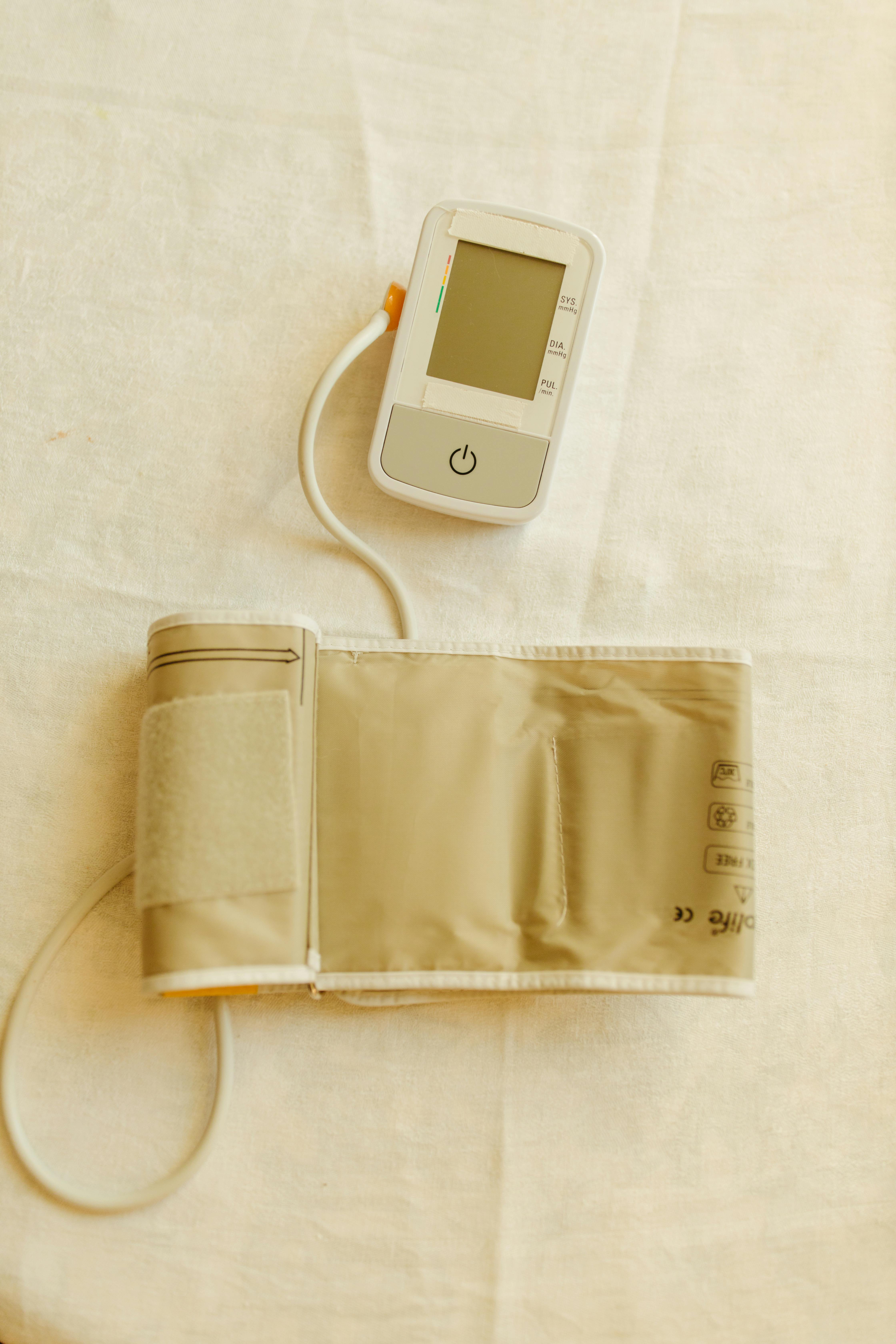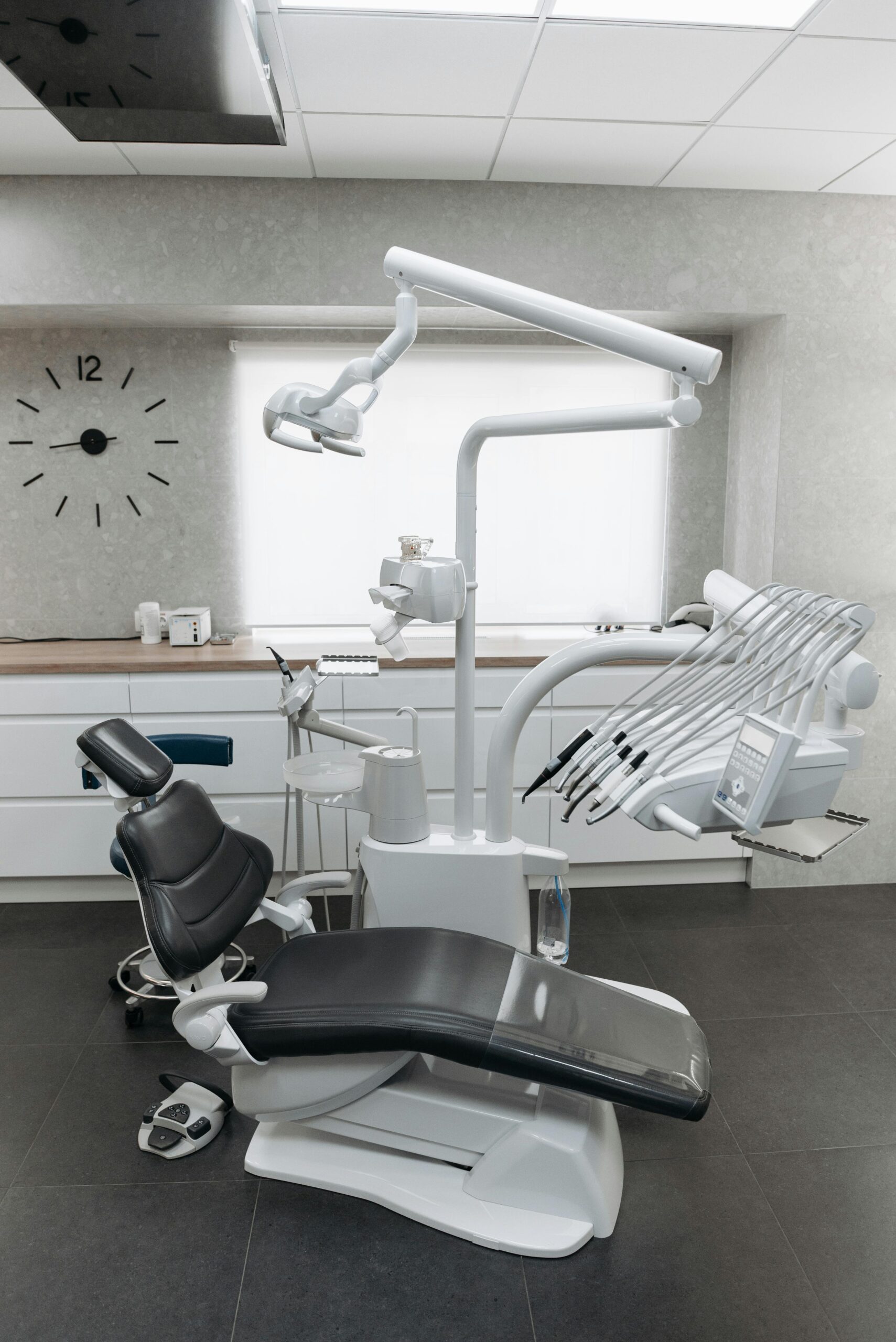Are you frantically searching for a 24 hour clinic near me that can provide immediate care when you need it the most? In today’s fast-paced world, medical emergencies doesn’t wait for business hours, making it crucial to find reliable and accessible healthcare services anytime. But how do you know which urgent care clinic open 24 hours is trustworthy and equipped to handle your health concerns? From sudden fever spikes to unexpected injuries, having a nearby after hours medical clinic can be a lifesaver. Many people overlook the importance of knowing where the closest walk-in clinic near me open late is, until an emergency strikes. Did you know that some 24/7 urgent care centers near me offer advanced diagnostic tools and even telemedicine options? Imagine getting expert advice without leaving your home, sounds convenient, right? Whether its a minor illness or a pressing health issue, finding the best emergency clinic near me open now can reduce stress and ensure timely treatment. So, what are the must-know tips to choose the perfect round the clock healthcare facility near me? Stay tuned as we uncover the secrets to accessing top-notch medical care any time of the day or night, because your health deserves nothing less than excellence, always!
Top 10 Tips to Find a 24 Hour Clinic Near Me for Fast and Reliable Care

Looking for a 24 hour clinic near me? Well, you’re not the only one who been searching for one in the dead of night or during those odd hours when most doctors’ offices are closed. It’s kinda frustrating when you got a sudden sore throat, or a twisted ankle and no idea where to turn. That’s why these clinics exist, ya know?
Why Bother With a 24 Hour Clinic?
Now, maybe it’s just me, but I feel like the phrase “24 hour clinic near me open on weekends” gets googled way too much. Why? Because life don’t follow a 9-to-5 schedule. Emergencies come when they damn well want. And hospital ERs are usually too crowded or expensive for minor stuff. That’s where these clinics shines. They provide medical care without the long wait and big bills.
| Benefit | Description |
|---|---|
| Convenience | Open all day and all night, including holidays. |
| Cost-Effective | Usually cheaper than emergency rooms visits. |
| Quick Service | Less waiting time, doctors available right away. |
| Wide Range of Care | Treat minor injuries, infections, and routine tests. |
What Services Does a 24 Hour Clinic Provide?
If you think these clinics only treat colds or flu, think again. They offer a variety of services that could be lifesavers when you don’t want to wait for your primary doctor, or if you don’t even have one yet.
Here’s a list of common services you’ll find at a 24 hour clinic near me with lab services:
- Treatment for minor injuries (sprains, cuts, burns)
- Cold and flu diagnosis and treatment
- Ear infections and sore throat care
- X-rays and lab tests on site
- Vaccinations and immunizations
- Some clinics even do physicals and wellness checks
Not really sure why this matters, but many times they accept walk-ins, which is a blessing when you wake up with a fever and no appointment.
How To Find The Right 24 Hour Clinic Near Me
Finding a good clinic is not just about typing in “24 hour clinic near me.” You wanna make sure they accept your insurance, have qualified staff, and don’t smell like old hospital waiting room (been there, done that).
Here’s a practical checklist you might wanna use:
| Factor | What To Look For |
|---|---|
| Location | Close enough for quick arrival, especially in emergencies. |
| Hours | Truly open 24/7, not just advertised. |
| Accepted Insurance | Saves you big bucks on out-of-pocket expenses. |
| Staff Qualifications | Board-certified doctors and nurses. |
| Reviews & Ratings | Real patients opinions, not just the website hype. |
Common Questions About 24 Hour Clinics
People always ask stuff like:
Q: Can I go to a 24 hour clinic for a broken bone?
A: Well, depends on the severity. Minor fractures? Probably yes. But for serious breaks, ER is better.
Q: Is it cheaper than the hospital ER?
Usually, yes. Emergency rooms charges can be outrageous for non-life threatening issues.
Q: Do 24 hour clinics have pharmacies?
Some do, some don’t. It’s best to ask ahead or check online.
A Real-Life Scenario
Imagine this: It’s 2 AM, and you suddenly feel a sharp pain in your stomach. You think, “Should I call 911? Or wait till morning?” If you don’t want to overreact but can’t just ignore it either, a 24 hour clinic near me open now could be the perfect middle ground. They can evaluate you, run some tests, and let you know if you need ER care or just rest.
Things To Keep In Mind Before Visiting A 24 Hour Clinic
- Bring your ID and insurance card, or be ready to pay cash.
- Make a list of your symptoms, and any medications you’re taking.
- Don’t expect full hospital services like surgeries or intensive care.
- Bring a friend or family member if you feel uneasy going alone at night.
Table Comparing 24 Hour Clinic vs ER
| Feature | 24 Hour Clinic | Emergency Room |
|---|---|---|
| Availability | 24/7 for minor emergencies | 24/7 for all emergencies |
| Cost | Lower | High |
| Wait Time | Shorter | Longer |
| Services | Minor injuries, lab tests | Major trauma, surgeries |
| Atmosphere | Less intimidating | Often hectic and stressful |
Why You Should Bookmark “24 Hour Clinic Near Me”
If you tend
How to Locate the Best 24 Hour Clinic Near Me: A Step-by-Step Guide

Finding a 24 hour clinic near me: What you really need to know
So, you’re searching for a 24 hour clinic near me, huh? Maybe it’s a sudden cough that won’t quit, or that weird rash you just noticed at midnight. Whatever it is, it’s frustrating when you don’t know where to go and the emergency room seems like an overkill. But hey, not every clinic stays open 24/7, so picking the right one can feel like hunting a unicorn.
Why a 24 hour clinic near me is important (or so they say)
You might think “why does it even matter if the clinic is open 24 hours?” Well, sometimes health issues don’t care about business hours. Like, imagine you wake up with a fever and chills at 2 AM, and you can’t get an appointment until next week. That’s when a 24 hour clinic near me comes into play, providing you care when you need it most, without the ER chaos.
But, no clinic is the same. Some clinics may only offer limited services after hours, like just basic checkups or flu shots. So, it’s wise to check what they exactly provide before running out the door.
Types of 24 hour clinics you might find around you
| Clinic Type | Services Offered | Best For |
|---|---|---|
| Urgent Care Centers | Minor injuries, infections, X-rays | Sprains, fevers, minor cuts |
| Walk-In Clinics | General health issues, vaccinations | Non-emergency illnesses |
| Emergency Clinics | Severe injuries, chest pain, severe bleeding | Life-threatening conditions |
Not really sure why this matters, but some people confuse urgent care with emergency rooms — they are NOT the same, trust me. Emergency rooms handle the big stuff, like heart attacks or severe trauma, while urgent care clinics handle things that need quick attention but aren’t life-threatening.
What to look for in a 24 hour clinic near me
Okay, so you found a clinic that’s open all day and night. Great! But hold your horses — before you jump in, here’s a little checklist that might save you some headaches:
- Location: Is it really near you, or is it 20 miles away? Because calling something “near me” when it’s a 30-minute drive kinda defeats the purpose.
- Services offered: Do they do labs, X-rays, or just basic exams? You don’t want to get there and find out they can’t help your sprained ankle.
- Wait times: Some 24 hour clinics can be packed like sardines at odd hours. Call ahead or check online reviews.
- Staff qualifications: Are the doctors board-certified? Or is it mostly nurse practitioners? Not knocking nurse practitioners — they’re awesome — but you might want to know who’s treating you.
- Cost and insurance: Are they in-network for your insurance? Sometimes 24 hour clinics can be pricey, especially if you don’t have coverage.
Common reasons people visit a 24 hour clinic near me
Here’s a quick rundown of why folks hit up these clinics when the regular doctor’s office is closed:
- Sudden fever or flu symptoms
- Minor injuries like cuts, sprains, or burns
- Allergic reactions that aren’t severe enough for ER
- Respiratory issues such as asthma flare-ups or bronchitis
- Prescription refills or medication questions
- Minor infections like urinary tract infections or ear infections
Honestly, maybe it’s just me, but I feel like having a 24 hour clinic near me feels like having a safety blanket. You know it’s there, even if you (hopefully) don’t need it all the time.
How to find a 24 hour clinic near me: Tools and tips
Nowadays, you don’t have to rely on your neighbor’s vague advice. Here are some practical ways to locate a 24 hour clinic near me:
- Google Maps: Search “24 hour clinic near me” and check the ratings and reviews.
- Health insurance website: Many insurers have a provider search tool with filters for urgent care or extended hours.
- Local hospital websites: They often list affiliated urgent care or walk-in clinics.
- Apps: Some apps like Zocdoc or Healthgrades allow you to book appointments at clinics with extended hours.
- Call your regular doctor’s office: Sometimes they have after-hours arrangements or can recommend a nearby clinic.
Table: Comparison of Popular Search Methods for 24 Hour Clinics
| Method | Pros | Cons |
|---|---|---|
| Google Maps | Fast, easy, user reviews | Can have outdated info |
| Insurance Website | Accurate for coverage | May not include all clinics |
| Hospital Websites |
Why 24 Hour Clinics Near Me Are the Ultimate Solution for Emergency Care

Finding a 24 hour clinic near me: What you really should know
So, you wakes up at 2 AM with a crazy stomach ache, or maybe your kid suddenly got a rash that looks like something from a sci-fi movie. What now? You probably start googling frantically, typing “24 hour clinic near me”, hoping to find a place that’s open and can handle your midnight medical drama. But are all these clinics really the same? Spoiler alert: no, they’re not.
What is a 24 Hour Clinic Anyway?
A 24 hour clinic near me basically means a healthcare facility that open all day and night, every day of the week. Unlike your usual doctor’s office that close at 5 PM sharp (or earlier, ugh), these clinics are there when you need them most. But not every 24 hour place is emergency room, so don’t go there for a broken arm that need surgery right away. They usually handle stuff like flu, minor infections, sprains, or other conditions that can’t wait till morning but don’t require ambulance.
Why People Search for “24 Hour Clinic Near Me” So Much?
I mean, it’s obvious, right? When you’re sick or hurt at weird hours, you want help fast. But maybe it’s just me, but I feel like people doesn’t realize the difference between urgent care and emergency room. Urgent cares can be lifesaver for non-life-threatening issues, and they usually cost less too. Plus, they doesn’t require appointments. You walk in, wait a little (hopefully not too long), and get treated. Way better than sitting in ER for hours with a cold.
Table: Difference between 24 Hour Clinic and Emergency Room
| Feature | 24 Hour Clinic | Emergency Room |
|---|---|---|
| Hours | 24/7 | 24/7 |
| Types of Cases | Minor injuries, flu, infections | Serious injuries, life-threatening conditions |
| Cost | Usually lower | Usually higher |
| Wait Time | Short to moderate | Long, depends on severity |
| Appointment | Not usually required | Not required |
How to Find the Right “24 Hour Clinic Near Me”
Now, if you just type “24 hour clinic near me” on Google and click on the first link, you might ends up in a place that isn’t exactly what you expect. Here’s some tips I would share if I was your friendly neighborhood doctor:
- Check the Clinic Reviews — Some clinics gets rave reviews for quick service and friendly doctors, others might be a nightmare. Don’t just trust what the clinic says on their own website.
- Verify the Services Offered — Not every 24 hour clinic do all kinds of treatments. Some specialize in pediatric care, others might focus on urgent care for adults.
- Look for Insurance Compatibility — Cause nobody want to pay a fortune out of pocket, right? Make sure they accept your insurance.
- Call Ahead — If you’re unsure, just give them a ring. Ask if they really open 24 hours, what kind of cases they handle, and if they have a doctor on site.
List: Common Services Available at 24 Hour Clinics
- Treatment for cold, flu, and fever
- Minor cuts and wounds care
- Sprains and strains diagnosis
- Allergic reactions (mild to moderate)
- Skin rashes and infections
- Urinary tract infections
- Vaccinations and immunizations
- Basic lab tests (blood, urine, etc.)
What To Bring When Visiting a 24 Hour Clinic
You might think “hey, it’s just a quick visit, why bother?” But trust me, coming prepared makes everything easier. Here’s a quick checklist:
- ID and insurance card (if you have one)
- List of current medications (if any)
- Any previous medical records related to your condition
- Payment method (cash, card, or whatever they accept)
- A list of questions you want to ask the doctor (not really sure why this matters, but people forget!)
Practical Tips for Using 24 Hour Clinics
Okay, so you found a 24 hour clinic near me and you’re ready to go. Here’s some practical advice:
- Try to avoid peak hours if you can. Even though they open all day and night, some times are busier than others.
- Don’t expect the same level of care as a hospital ER for serious conditions.
- If your symptoms worsen or become severe (chest pain, difficulty breathing, heavy bleeding), go to the emergency room instead.
- Bring a friend or family member when possible, especially if you’re feeling really sick or anxious.
- Keep notes of your visit, including medications prescribed and follow-up instructions.
Why 24 Hour Clinics Are a Game Changer
Honestly, I think
5 Key Benefits of Visiting a 24 Hour Clinic Near Me After Hours

Looking for a 24 hour clinic near me can be a real headache, specially when you need one in the middle of the night or during a holiday. You know, sometimes it feels like these clinics are hiding in some secret spots, only to pop up when you most desperately needs them. But hey, lets dive into why these clinics are a lifesaver and what you should keep in mind when searching for one.
Why You Might Need a 24 Hour Clinic?
Okay, so you sprained your ankle playing basketball at 2 AM, or maybe your kid has a fever that just won’t quit. Emergency rooms are great, but honestly, sometimes they’re packed with a million people, and waiting for hours feels like eternity. That’s where 24 hour clinic near me comes handy. These clinics usually handle non-life-threatening issues that still needs urgent attention, like minor injuries, infections, flu symptoms, and other stuff that can’t wait till morning.
Not really sure why this matters, but many people confuse urgent care clinics with emergency rooms. Spoiler: they are not the same! Urgent care clinics don’t usually have the full resources ERs have, but they are faster and cheaper for less serious problems. Plus, they’re open round the clock, which is like a blessing when you are stuck in a medical pickle at weird hours.
How to Find a 24 Hour Clinic Near You?
Finding one is not rocket science, but depends on your location. Here’s a quick checklist you can follow:
| Step | Description |
|---|---|
| Google Search | Type 24 hour clinic near me on your search bar, and explore the options. |
| Check Reviews | Look at the patient reviews. Real talk, some places sound fancy but have terrible reviews. |
| Insurance Accepted | Not all clinics take all insurances, so double-check before you go. |
| Services Offered | Some clinics only treat minor conditions, others might offer lab tests, x-rays, etc. |
You can also use apps like ZocDoc or Healthgrades for more detailed info. Maybe it’s just me, but I feel like apps sometimes give you a better overview than just Googling.
What Services Do 24 Hour Clinics Generally Provides?
Here’s a little list of common services you’ll find at most 24 hour clinic near me places:
- Treatment of minor cuts, scrapes and burns
- Diagnosis and treatment of flu, cold, sore throat
- X-rays and lab tests for injuries and infections
- Vaccinations and immunizations
- Management of chronic illnesses like asthma or diabetes flare-ups
- Physical exams for sports or school
Not every clinic will have all these, so better call ahead if you are unsure. I mean, you don’t wanna show up expecting a full hospital service and get disappointed, right?
Costs and Insurance — What You Should Know
One thing that always puzzles people is the cost. Urgent care clinics are generally cheaper than ER visits but pricier than your regular doctor visits. Here’s a quick table to give you an idea:
| Type of Visit | Approximate Cost Without Insurance |
|---|---|
| Regular Doctor Visit | $100 – $200 |
| 24 Hour Clinic Visit | $150 – $300 |
| Emergency Room Visit | $500 – $2000+ |
Prices vary by state and clinic, so don’t quote me on those numbers. Also, many clinics accept insurance, but some don’t. It’s kinda annoying but just call ahead to save yourself some surprise bills.
Tips When Visiting a 24 Hour Clinic
So you found a 24 hour clinic near me, cool. Here’s some practical advice before you rush in:
- Bring your ID and insurance card. Sounds obvious, but you’ll be surprised how many forget this.
- Write down your symptoms and any medications you are taking. Helps the doctor figure out what’s wrong faster.
- Be clear about your medical history. Don’t hold back info thinking it’s irrelevant.
- Ask about follow-up care or referrals if needed. Not all clinics provide comprehensive treatment.
- Don’t expect ER-level care for serious emergencies. If you think it’s life-threatening, call 911.
A Quick Comparison: 24 Hour Clinic vs Emergency Room
| Feature | 24 Hour Clinic | Emergency Room |
|---|---|---|
| Hours | 24/7 | 24/7 |
| Wait Time | Usually shorter | Often longer due to critical cases |
| Cost | Lower | Higher |
| Types of Cases | Minor to moderate | All, including life-threatening |
| Equipment & Specialists | Limited | Extensive |
You see, it’s all about picking the right place for your condition. Don’t go to ER for
How to Choose a Trusted 24 Hour Clinic Near Me for Immediate Medical Attention

Looking for a 24 hour clinic near me can be a total lifesaver, specially when you got that annoying sore throat or a sudden fever at 3 in the morning. Not really sure why this matters, but many people don’t realize how important it is to have access to healthcare around the clock. I mean, emergencies don’t wait for business hours, right? So, if you ever wonder “where can I find a 24 hour urgent care near me?” then you’re in the right place to get some down-to-earth info.
What is a 24 Hour Clinic Anyway?
Okay, so basically a 24 hour clinic near me is a medical facility that open all day, all night, every day of the week. Sounds simple enough, but the big deal is these clinics handle non-life threatening emergencies when your regular doctor is snoozing. They usually have nurses, doctors, and sometimes even specialists to help you out without the long waits ERs tend to give. Not to brag, but they are perfect for things like minor fractures, infections, or even just that weird rash that popped up overnight.
Why You Should Know Where Your Nearest 24 Hour Clinic Is
Maybe it’s just me, but I feel like people always wait until something bad happens before they figure out where their nearest 24 hour clinic near me is. You don’t want to be that guy googling frantically at 2 AM trying to find urgent care open now. Here’s a quick list why knowing your nearest clinic is a smart idea:
- Immediate care without waiting for office hours
- Usually cheaper than emergency rooms
- Less crowded, so you get treated faster
- Access to basic lab tests and x-rays on site
- Friendly staff who actually understand urgent problems
Types of Services You Can Expect at a 24 Hour Clinic Near Me
So what can you really get done at these clinics? Here’s a little cheat sheet of common services:
| Service | Description | Suitable For |
|---|---|---|
| Minor Injury Treatment | Cuts, sprains, minor burns | When you don’t need ER but need care fast |
| Illness Diagnosis & Treatment | Flu, colds, infections, rashes | When you feel sick but not too sick |
| Lab Tests & X-rays | Blood tests, urinalysis, imaging | Helps doctors understand your problem better |
| Vaccinations | Flu shots, travel vaccines | Keep your immunizations updated |
| Physical Exams | General checkups, school or work physicals | Non-emergency health assessments |
If you’re googling “24 hour urgent care near me with x-ray” – bingo! Most clinics offer exactly that, which saves you the hassle of going to multiple spots.
How to Find the Best 24 Hour Clinic Near Me?
Finding a clinic that open 24/7 might sound easy, but trust me, there’s more to it than just typing “24 hour clinic near me” into Google. Here’s some tips to help you spot the best one:
- Check Reviews: People don’t lie on the internet… most times. Look for clinics with good ratings and happy patients.
- Location: Choose one that is close enough so you don’t waste time stuck in traffic during an emergency.
- Services Offered: Not all clinics are made equal. Some may not have x-ray or lab services.
- Insurance Accepted: Unless you want to pay a small fortune, make sure they accept your insurance plan.
- Wait Times: Some clinics are busier than others, so call ahead or check online wait times if possible.
A little table to help you compare:
| Clinic Name | Distance (miles) | Has X-ray | Accepts Insurance | Average Wait Time |
|---|---|---|---|---|
| QuickCare 24/7 | 2.5 | Yes | Yes | 15 mins |
| Night & Day Clinic | 5 | No | Yes | 30 mins |
| UrgentMed Express | 3 | Yes | No | 20 mins |
When to Go to a 24 Hour Clinic vs Emergency Room?
Now, this is where it gets tricky. People often confuse when to go to a 24 hour clinic near me and when to just call 911 or rush to the ER. Here’s a rough guide to help you decide:
| Condition | Go to 24 Hour Clinic | Go to Emergency Room |
|---|---|---|
| Mild fever, sore throat | Yes | No |
| Broken bone with deformity | No | Yes |
| Severe chest pain or stroke symptoms | No |
The Ultimate Checklist for Finding a 24 Hour Clinic Near Me Open on Weekends

Finding a 24 hour clinic near me can be a lifesaver, especially when you’re stuck with a sudden fever or a twisted ankle in the middle of the night. But honestly, it’s not always as easy as just googling and picking the first spot that pop ups. Sometimes, these clinics are super busy, or they dont have the exact service you was looking for. So, let’s dive into what you should really be knowing about 24 hour clinic near me and why it might be your best buddy when health hits a snag.
What Exactly Is a 24 Hour Clinic?
Alright, so a 24 hour clinic near me basically means a medical facility that’s open all day, all night – 24/7. Sounds simple, but here’s the kicker: not all of them are equal. Some might only handle minor emergencies like sprains or infections, while others could be full-blown urgent care centers that can do X-rays or stitches. It’s kinda like comparing a corner store to a supermarket. Both open late, but their stocks are totally different.
Why Should You Care About Finding a 24 Hour Clinic Near Me?
Maybe it’s just me, but I feel like people don’t think about where their nearest clinic open 24/7 is until they really need one. But having a go-to place can save you tons of headache (and money too). Emergency rooms are great but can be super costly and crowded. A 24 hour clinic near me often provides quicker, cheaper care for stuff that isn’t life-threatening but still urgent.
Table: Comparison Between ER and 24 Hour Clinics
| Feature | Emergency Room (ER) | 24 Hour Clinic Near Me |
|---|---|---|
| Open 24/7 | Yes | Yes |
| Wait Time | Usually long | Usually shorter |
| Costs | High | More affordable |
| Types of care offered | All emergencies | Minor emergencies, basic tests |
| Need for appointment | No | Usually no |
Types of Services You Can Expect at a 24 Hour Clinic
You might be wonder, “Are these clinics really equipped to handle my weird rash or that persistent cough?” Well, many 24 hour clinic near me offer services like:
- Treatment for minor illnesses (cold, flu, infections)
- Wound care (stitches, bandages)
- Basic diagnostic tests (blood tests, X-rays)
- Vaccinations and immunizations
- Health screenings and physical exams
- Prescription refills
Not every clinic will have the same list, so it’s good to call ahead or check their website. I mean, who wants to drive all the way there only to be told “sorry, we don’t do that here”?
How to Find the Best 24 Hour Clinic Near Me
Finding a clinic that’s open 24 hours is one thing, but finding a good one is a whole different ball game. Here’s a lil checklist you can use:
- Location: Closer is better, trust me when I say this.
- Reviews: Read what other patients say, but take it with a grain of salt.
- Services: Make sure they provide what you need.
- Staff: Friendly and professional are must-haves.
- Cost: Check if they accept your insurance or offer affordable rates.
- Accessibility: Parking, public transport options, and wheelchair access.
Honestly, I use Google Maps a lot, but sometimes local forums or Facebook groups have golden nuggets of info that doesn’t show up on search engines. Not really sure why this matters, but local chatter can be surprisingly helpful.
Practical Insight: When Should You NOT Go to a 24 Hour Clinic?
Look, 24 hour clinic near me are great, but they ain’t ERs. If you’re experiencing:
- Chest pain or difficulty breathing
- Severe bleeding that won’t stop
- Sudden weakness or vision loss
- Head trauma or unconsciousness
You should call emergency services or go straight to an ER. These clinics are for less intense emergencies, so don’t mess around thinking they are a substitute for all hospital services.
Checklist: Items to Bring to Your Visit
| Item | Why You Need It |
|---|---|
| Identification | For registration and insurance |
| Insurance card | To cover costs |
| List of medications | Helps doctors know your history |
| Previous medical records | Saves time and avoids repeats |
| Payment method | Cash, card, or insurance info |
Sometimes, you forget these little things and it makes the visit longer and more stressful. Trust me, been there done that.
The Role of Telemedicine in 24 Hour Clinics
With the world going more digital, many 24 hour clinic near me also offer telemedicine services.
What to Expect at a 24 Hour Clinic Near Me: Fast, Affordable, and Quality Care

Finding a 24 hour clinic near me can be a real lifesaver, specially when your usual doctor office is closed and you suddenly feel like you’re turning into a walking disaster. I mean, who wants to wait until Monday morning when your fever is blasting through the roof? Not me, and probably not you either.
Why Search for a 24 Hour Clinic Near Me?
Sometimes, emergencies don’t care about business hours. You might be dealing with a sprained ankle, sudden flu symptoms, or even those weird rashes that pop up out of nowhere. So, you start googling “24 hour urgent care near me” or “walk-in clinic open all night.” But here is the thing, not all clinics that say “24 hour” actually stay open 24/7. Confusing, right? You got to double-check, or you end up standing in front of a locked door, feeling like an idiot.
| Common Reasons to Visit a 24 Hour Clinic | Why Wait? |
|---|---|
| Sudden fever or chills | Can’t wait for normal doctor hours |
| Minor injuries like cuts or sprains | ER is too crowded and expensive |
| Allergic reactions | Immediate care needed without ER trip |
| Prescription refills in emergencies | Pharmacy closed or out of stock |
Maybe it’s just me, but I feel like having a reliable “24 hour clinic near me open now” option is like having a health insurance policy you actually want to use. You know, those moments when you don’t wanna drive all the way to the ER just because you stub your toe real bad or have a nasty cough at 2 AM.
How to Find the Best 24 Hour Clinic Near Me?
There are a bunch of ways to find a 24 hour clinic near me open late. First, ask your friends or family, because honestly, Google reviews sometimes feel like a mixed bag. Some people complain about the staff, others swear by the place. It’s like a box of chocolates, you never know what you gonna get.
Second, check out online directories or health apps like Zocdoc or Healthgrades. They usually list clinics with their hours, accepted insurance, and even wait times. But beware, some clinics might say they’re open 24 hours but only have a nurse on call after certain hours. Not really sure why this matters, but it does when you expect a full doctor visit and get a nurse telling you to come back next day.
What Services Do 24 Hour Clinics Usually Offer?
Here’s a quick rundown of typical services you might find at a 24 hour urgent care near me:
- Treatment for minor injuries (cuts, sprains, bruises)
- Basic lab tests (blood work, urine tests)
- X-rays for simple fractures
- Vaccinations and immunizations
- Flu and cold treatments
- Prescription refills and medication advice
- Minor surgical procedures like wound stitching
Not all clinics offer every service, so it’s a good idea to call ahead or check online before showing up. Nothing worst than driving all over town just to find out they can’t help with your problem.
Quick Tips for Visiting a 24 Hour Clinic
| Tip Number | Advice |
|---|---|
| 1 | Bring your ID and insurance card |
| 2 | Know your medical history basics |
| 3 | Be ready to explain symptoms clearly |
| 4 | Ask about costs upfront |
| 5 | Check wait times online if possible |
And yeah, sometimes these clinics are busy, especially late at night or during flu season. Don’t be surprised if you wait for a bit, or if the doctor looks like they’ve been up for 48 hours straight. Happens to the best of us.
Do 24 Hour Clinics Cost More?
You might be wondering if visiting a 24 hour clinic near me with no appointment cost you an arm and a leg. Well, it depends. Usually, these clinics are cheaper than emergency rooms, but pricier than your regular doctor. Insurance coverage also varies — some plans cover urgent care visits fully, others not so much.
Here’s a rough comparison:
| Type of Care | Typical Cost Range | Insurance Coverage |
|---|---|---|
| Regular Doctor Visit | $50 – $150 | Usually covered |
| 24 Hour Urgent Care | $100 – $250 | Sometimes covered |
| Emergency Room Visit | $500 – $3000+ | Usually covered |
If you have a minor issue, it makes sense to hit up a 24 hour clinic near me accepting walk-ins instead of the ER. But if you’re bleeding uncontrollably, well, maybe don’t wait around.
Location, Location, Location!
Finding a
7 Common Medical Issues Treated at 24 Hour Clinics Near Me You Should Know About

Looking for a 24 hour clinic near me can be a bit of a headache, especially when you need medical help like, right now. You know, sometimes it feels like these clinics are hiding behind every corner, but when you really need one, poof, they disappear! Anyway, let’s dive into why finding a 24 hour urgent care clinic near me is actually more important than you might think.
Why You Might Need a 24 Hour Clinic Near Me?
Imagine this: it’s 2 AM, you got a weird rash popping up, or maybe your kid just bumped their head and you don’t wanna wait till morning. What you do? You search “24 hour clinic near me open now” on your phone, hoping to find some magical place open at this witching hour. These clinics offer you medical care without the long ER wait times, which honestly, can be as long as watching a Netflix series.
Here’s a quick list of common reasons people look for these clinics:
| Common Reasons to Visit a 24 Hour Clinic Near Me | Notes |
|---|---|
| Minor injuries (sprains, cuts, bruises) | Usually treated immediately, no appointment needed |
| Cold and flu symptoms | Better than waiting for your doctor next day |
| Allergic reactions (mild to moderate) | Sometimes needs urgent attention, but not ER level |
| Fever and infections | Quick diagnosis and treatment |
| Vaccinations and basic lab tests | Handy for unexpected situations |
I mean, not all urgent care clinics are created equal. Some have fancy equipment, some barely have a waiting room chair. So, if you really care about quality, you better check what kind of services a 24 hour medical clinic near me offers before you rush in.
How to Find the Best 24 Hour Clinic Near Me
Okay, so you typed “24 hour walk in clinic near me” and got a bunch of results. But how do you choose? Here are some things to consider:
- Location: Obviously, the closer the better. But sometimes a clinic 10 minutes away beats one 2 minutes away if it has better service.
- Reviews: People love to complain online, so check reviews but take them with a grain of salt.
- Services Offered: Not every clinic can handle all emergencies. If you have a complicated issue, make sure they can handle it.
- Insurance Accepted: This one can be a pain. Some clinics take most insurance, others are cash only.
- Wait Times: If you call ahead and they say 3 hours wait, maybe keep looking.
Here’s a table comparing some typical features you might find:
| Feature | Clinic A | Clinic B | Clinic C |
|---|---|---|---|
| Open 24/7 | Yes | No (closes 10 PM) | Yes |
| Accepts Major Insurance | Yes | Yes | No |
| Average Wait Time | 30 minutes | 45 minutes | 15 minutes |
| Pediatric Care Available | No | Yes | Yes |
| On-site Lab | Yes | No | Yes |
Not really sure why this matters, but some clinics even offer telemedicine nowadays. So, if you just wanna talk to a doc without leaving your couch, some 24 hour telehealth clinic near me might do the trick.
What to Expect When You Visit a 24 Hour Clinic
If you have never been to one, it can be a bit confusing. You walk in, sometimes they ask you to fill forms, other times you just sit down and wait. The staff might be juggling phone calls, patients, and probably thinking about lunch. So be patient, please!
Here’s a quick checklist of things you should bring:
- Your ID and insurance card (if you have one, otherwise be ready to pay)
- A list of your symptoms and any medications you are taking
- Emergency contacts, just in case
- Any previous medical records, if possible
The visit usually goes like this:
| Step | What Happens |
|---|---|
| Registration | You give your info and describe your problem |
| Waiting | Time varies, bring a book or phone |
| Medical Examination | Nurse or doctor checks your vitals and symptoms |
| Diagnosis & Treatment | You get meds, advice, or maybe a referral |
| Follow-up Instructions | Sometimes they want you to see a specialist |
Tips for Using a 24 Hour Clinic Near Me Effectively
Maybe it’s just me, but I feel like people forget these clinics are for urgent care, not for a full physical or chronic disease management. If you always
How 24 Hour Clinics Near Me Provide Convenient Care During COVID-19 and Beyond

Looking for a 24 hour clinic near me? Well, you’re not alone in this quest, I swear it feels like everyone is googling this at 3 AM when they suddenly remember that cough they been ignoring. But here’s the thing — finding a clinic that actually opens around the clock isn’t always as easy as it sounds. Let’s dive into what you really need to know if you’re hunting for a 24 hour urgent care clinic near me or maybe even a 24 hour medical clinic near me that won’t judge you for showing up in your pajamas.
Why You Might Need a 24 Hour Clinic Near Me
Maybe it’s just me, but I think health emergencies don’t care about office hours. You wake up with a fever at midnight, or your kid breaks their arm at 2 AM (been there, not fun), and suddenly the normal 9-5 doctor office looks like a distant dream. That’s where a 24 hour clinic near me open now becomes your best friend.
Some common reasons people rush to these clinics includes:
- Sudden fevers or infections that just won’t wait
- Minor fractures or sprains that don’t need an ER trip
- Allergic reactions or asthma attacks
- Persistent stomach pain or vomiting
- Unexplained rashes or skin irritations
And honestly, sometimes you just want to know if that headache is worth worrying about or just stress. Not really sure why this matters, but the peace of mind is priceless.
Types of 24 Hour Clinics You Can Find
No two clinics are alike; some specialize in urgent care, others provide general practice, and some even have walk-in emergency room style services. Here’s a quick table of what you might expect from different 24 hour healthcare clinics near me:
| Clinic Type | Services Offered | Typical Wait Times | Cost Range |
|---|---|---|---|
| Urgent Care Clinics | Minor injuries, infections, basic labs | 15-45 minutes | $100 – $300 |
| Emergency Clinics | Severe injuries, trauma, life-threatening | Minimal | $500+ |
| Walk-In Clinics | General illnesses, vaccinations, screenings | 10-30 minutes | $75 – $200 |
| Telemedicine Services | Virtual consultations, prescriptions | Immediate | $40 – $100 |
If you’re thinking “why would I pay more for urgent care when ER is there?”, well, the ER is for life threatening stuff, not for that annoying sore throat or mild sprain. Plus, ER waits can be legendary long.
How to Find a Trustworthy 24 Hour Clinic Near Me
The internet is a big place, and google results can sometimes be misleading. You might type “best 24 hour clinic near me without insurance” and get a bunch of ads, or clinics that close on holidays (sneaky!). Here’s some tips for your search:
- Check reviews: Yelp, Google reviews, and sometimes Facebook groups give honest opinions from real people.
- Verify services: Don’t assume “24 hour” means full emergency services. Call ahead if you can.
- Insurance accepted: Many clinics accept insurance, but some offer affordable self-pay rates if you’re uninsured.
- Location matters: A clinic 30 miles away might be useless if you need care NOW.
- Look for specialists: Some clinics have pediatricians or urgent dental care — depends on your needs.
List of Popular Keywords You Might Search
Just in case you want to spice up your search, here’s a list of long-tail keywords related to 24 hour clinic near me you might wanna try:
- 24 hour urgent care clinic near me open now
- 24 hour walk in clinic near me
- 24 hour medical clinic near me with lab services
- 24 hour pediatric clinic near me
- cheap 24 hour clinic near me without insurance
Using these can help narrow down your options, trust me on this one.
Practical Insights: What to Bring to Your Visit
You might think, “I’m just popping in, why bring stuff?” but preparation helps a lot. Here’s a quick checklist:
| Item | Why You Need It |
|---|---|
| ID and insurance card | To verify your identity and coverage |
| List of current medications | Helps doctors avoid prescription conflicts |
| Medical history summary | Speeds up diagnosis and treatment |
| Payment method | Some clinics require upfront payment |
| List of symptoms | Helps you explain your condition clearly |
And hey, don’t forget a mask. Not really sure why this still matters, but apparently, it does.
What to Expect During Your Visit
If you’ve
Emergency vs. 24 Hour Clinic Near Me: When Should You Visit Which?

Finding a 24 hour clinic near me has became a top priority for many folks nowadays, especially when unexpected health issues pop out at the worst possible times. You never know when you gonna need a doctor, right? And honestly, waiting till morning in pain or stress isn’t fun neither.
Why 24 Hour Clinic?
So first thing first, why should you really care about a 24 hour urgent care clinic near me? Well, hospitals are great but sometimes they’re overcrowded and you don’t want to be stuck staring at a wall for hours. A 24 hour clinic near me can provide quick medical attention without the ER chaos. Plus, the prices usually bit lower than emergency rooms, which is good for your wallet – cause who likes surprise medical bills? Not me, that’s for sure.
What Services Usually Offered by 24 Hour Clinics
Now, you might wonder, what can these clinics actually do? Here’s a quick rundown, not exhaustive of course, but gives you the idea:
| Service Type | Description | Typical Wait Time |
|---|---|---|
| Minor Injury Treatment | Cuts, sprains, minor burns, broken fingers | 15-30 minutes |
| Illness Diagnosis | Flu, cold, infections, allergies | 20-40 minutes |
| Lab Tests & X-rays | Blood tests, urine tests, basic X-rays | 30-60 minutes |
| Vaccinations | Flu shots, tetanus boosters | 10-20 minutes |
| Physical Exams | School, sports, or work-related physicals | 20-30 minutes |
Honestly, if you got a fever or some weird rash at 2am, searching for a 24 hour walk in clinic near me is probably your best bet. Not really sure why this matters, but some clinics even offer telemedicine services now, so you can talk to a doc without leaving your house. Fancy, huh?
How to Find a Reliable 24 Hour Clinic Near Me
Okay, so you know you want a 24 hour clinic near me open now, but how do you pick the right one? Here’s some tips that might help you avoid a headache later on:
- Check Online Reviews: Yelp, Google reviews, sometimes Facebook too. People love to complain, but also praise if they had good experience.
- Location is Key: You want something close enough, in case your Uber driver gets lost or you’re feeling too sick to travel far.
- Insurance Acceptance: Not all clinics take every insurance plan, so better check first or you might get slapped with a huge bill.
- Services Offered: Some 24 hour clinics only do urgent care stuff, others might have broader services.
- Staff Qualifications: Look for clinics with licensed doctors and nurses, not just assistants.
Maybe it’s just me, but I feel like sometimes people overlook this step and then regret it when they get there and realize they can’t get the help they need. So, a little research goes a long way.
Table: Comparison of Popular 24 Hour Clinics in Urban Areas
| Clinic Name | Location | Accepts Insurance? | Walk-Ins Allowed | Telemedicine Available | Average Wait Time |
|---|---|---|---|---|---|
| QuickCare 24/7 | Downtown City | Yes | Yes | Yes | 25 min |
| NightOwl Medical | Suburbia | No | Yes | No | 15 min |
| AllHours Health | Near Airport | Yes | Yes | Yes | 30 min |
| CareNow Express | Shopping District | Yes | Yes | No | 20 min |
When to Go to a 24 Hour Clinic Instead of ER?
This is a tricky one, cause sometimes you just don’t know what’s serious or not. But here’s some quick pointers:
Go to 24 hour clinic if:
- You got a fever, cough, cold that just won’t go away
- Minor cuts and scrapes that might need stitches
- Sprains or minor broken bones (not major trauma)
- Need prescription refills or vaccinations urgently
Go to ER if:
- Chest pain or severe breathing trouble (call 911 instead!)
- Heavy bleeding that won’t stop
- Head injury with confusion or unconsciousness
- Severe allergic reactions with swelling or difficulty breathing
Honestly, if you ever in doubt, it’s better to err on the side of caution and head to emergency room. But if you just want to avoid long waiting lines and hospital prices, a 24 hour urgent care near me open late could save your day (or night).
Tips for Visiting a
How to Use Google Maps and Apps to Find a 24 Hour Clinic Near Me Instantly

Finding a 24 hour clinic near me: What you should really know
Okay, so you’re looking for a 24 hour clinic near me, and lemme tell you, it’s not always as easy as just googling it. These clinics are lifesavers when you got a sudden fever at midnight or maybe a weird rash that suddenly popped out. But not all clinics are created equal, and sometimes you might end up at a place that looks 24/7 but actually close a bit earlier. Confusing much?
Why a 24 hour clinic is a big deal
Not really sure why this matters, but many people assume emergency rooms are the only place open all night. Nah, not really. A 24 hour clinic near me means you can get medical attention without the ER chaos and the long wait times. These clinics usually handle minor injuries, infections, or illnesses that don’t require full hospital care. So, if you twisted your ankle or got a nasty cold, these clinics are your best friend.
| Clinic Feature | Description | Why it matters |
|---|---|---|
| Open 24/7 | Always open, even holidays | You can go any time, no panic needed |
| Walk-in service | No appointment needed | Great for last minute or urgent visits |
| Basic diagnostic tools | On-site X-rays, blood tests, etc. | Faster diagnosis without ER hassle |
| Prescription services | Can prescribe medications | Saves trip to pharmacy sometimes |
How to find the best 24 hour clinic near me
Finding a good clinic is like finding a needle in a haystack, especially if you’re in a new town or city. Here’s some tips that might help you avoid the headache:
- Google Maps is your friend. Just type 24 hour clinic near me, but be careful – some places say open 24 hours but close early on weekends.
- Call ahead if you can. Might sound obvious, but some clinics have weird holiday hours, you know?
- Check reviews online, but take them with a grain of salt. Sometimes people complain about the stupidest stuff, like the waiting room music or parking space.
- Ask your friends or family if they know a good spot. Old school but sometimes works better than internet.
What services usually offered in a 24 hour clinic
You might think these clinics are like mini hospitals, but nope, they usually focus on simple treatments. Here’s what you can expect:
- Treat minor cuts, bruises, and sprains
- Diagnose and treat flu or cold symptoms
- Manage infections like urinary tract infections or ear infections
- Provide vaccinations (flu shots, tetanus, etc.)
- Basic lab tests and imaging
Honestly, if you got a heart attack or severe trauma, you better call 911 or head to the ER. Don’t try to be tough and go to a clinic for that.
Comparison Table: 24 Hour Clinic vs Emergency Room
| Feature | 24 Hour Clinic | Emergency Room |
|---|---|---|
| Wait time | Usually shorter | Can be hours |
| Cost | Generally lower | Much higher |
| Severity of cases | Minor to moderate only | Severe and critical cases |
| Availability | 24/7 in some locations | Always open |
| Equipment | Limited | Full hospital equipment |
What to bring when you visit a 24 hour clinic
You might think showing up empty handed is fine, but nope, it helps to be prepared:
- ID and insurance card (if you got one)
- List of current medications (or just your pills in the bottle)
- Any previous medical records or test results if you have them
- Reason for visit written down, because sometimes nerves make you forget half of it
Common misconceptions about 24 hour clinic near me
Some folks think that all 24/7 clinics will fix everything, but that’s a bit of a stretch. They don’t have all the fancy machines or specialists like hospitals do. Also, not every symptom deserves a trip there. For example, if you got a mild headache, maybe just drink some water first? But hey, I’m not a doctor, just saying.
Practical insight: When to choose a 24 hour clinic over ER
| Scenario | Choose 24 Hour Clinic? | Why or Why Not? |
|---|---|---|
| Small cut needing stitches | Yes | Faster and cheaper than ER |
| Severe chest pain or difficulty breathing | No | Needs immediate emergency care |
| Flu symptoms with fever | Yes | Can get diagnosis and meds without ER wait |
| Broken bone | Maybe | Depends on severity; |
Affordable 24 Hour Clinics Near Me: How to Get Quality Care Without Breaking the Bank

Looking for a 24 hour clinic near me can be a real lifesaver, especially when your regular doctor’s office is closed and you just can’t wait till morning. I mean, nobody wants to be stuck in an emergency room for hours just because you sprained your ankle or have a nasty flu. But finding the right place that’s open all day and night, and also close by, ain’t always that easy. So, let’s dive into what makes these clinics tick, why you might need one, and how to find the best urgent care centers open 24 hours near me without breaking your brain.
What is a 24 hour clinic, and why do you even need one?
Okay, so a 24 hour clinic near me is basically a medical facility that stays open round the clock — yes, 24/7 — to treat non-life-threatening conditions. This means if you got a bad cough, fever, minor cuts or sprains, you can just pop in anytime, even at 3 AM, and get help without waiting forever. Not really sure why this matters, but people often confuse these clinics with emergency rooms. They ain’t the same, and you shouldn’t go to a 24 hour clinic if you’re having a heart attack or severe bleeding — call 911 instead!
Common services you find at a 24 hour clinic
Here’s a quick list, cause sometimes seeing things in a list makes stuff easier to remember:
| Service Offered | Description | When to Use It |
|---|---|---|
| Minor injury treatment | Cuts, sprains, minor burns | When you hurt yourself, but it’s not life-threatening |
| Flu and cold symptoms treatment | Fever, cough, sore throat | When you feel awful but can’t see your primary doc |
| Vaccinations | Flu shots, tetanus boosters | To keep up your immunizations, even after hours |
| Diagnostic tests | X-rays, blood tests | To figure out what’s wrong without ER trip |
| Prescription refills | Renewing meds you run out of | So you don’t miss your meds dosage |
How to find best 24 hour walk in clinic near me?
Alright, this part can be tricky, but here’s what you gotta do. First, google is your friend, obviously. Just type 24 hour clinic near me or urgent care open 24 hours near me and see what pops up. But wait — don’t just pick the first one! Check the reviews, call them if you can to ask about wait times and services they offer. Some clinics might say 24 hours but actually close in the middle of the night (yeah, sneaky).
Maybe it’s just me, but I feel like a lot of these clinics don’t list their prices upfront, which is kinda shady. Always ask about costs if you don’t want a surprise bill later. Also, check if they accept your insurance — because no one wanna pay out of pocket if it can be avoided.
Pros and cons of using a 24 hour clinic
You gotta weigh the good and the bad before deciding if a 24 hour clinic near me is right for you. Here’s a little table I put together to help:
| Pros | Cons |
|---|---|
| Open all day and night, super convenient | Not equipped for major emergencies |
| Usually shorter wait than ER | Might not have your regular doc |
| Less expensive than emergency rooms | Some clinics don’t accept all insurance plans |
| Can handle a wide range of minor issues | Limited advanced diagnostic tools |
What to expect when you visit?
Show up, check in, wait your turn — pretty simple, right? But here’s some insider tips: bring your ID, insurance card, and list of current meds. Oh, and don’t forget to mention any allergies or past health problems. The staff might ask a bunch of questions, which can be annoying but it’s for your own good.
Usually, the doctor or nurse practitioner will do a quick exam, maybe order some tests if needed, and then give you treatment or prescriptions. Not every 24 hour clinic got a lab or x-ray on site, so sometimes they’ll send you elsewhere if more tests needed.
Real-life scenarios when a 24 hour clinic saved the day
Imagine it’s 11 PM, and your kid suddenly gets a fever and won’t stop coughing. You panic, but then remember there’s a 24 hour clinic open near me just 5 minutes away. You drive over, the wait is short, and the staff gives your kid medicine and advice to manage symptoms at home. You sleep better that night knowing it wasn’t something serious.
Or maybe you’re working late, and out of nowhere, you cut your hand
The Rise of Telehealth at 24 Hour Clinics Near Me: What You Need to Know

Finding a 24 hour clinic near me can be a lifesaver, especially when unexpected health issues pops up at the worst times. Nobody plans to get sick at midnight or on a holiday, but it happens, and when it does, you want to know where to run without waitings hours in an emergency room. So, let’s dive into what makes these clinics tick, why you might need one, and some tips on finding the best ones near you.
Why You Might Need a 24 Hour Clinic Near Me
Ok, so maybe you stub your toe bad, or you got a fever that just won’t quit. It’s not always an emergency but still needs immediate attention. That’s where these clinics shines. They are open when your regular doctor office is closed, so you don’t have to wait till Monday to get help. Plus, not all problems require ER visits, which can be super expensive and overcrowded.
Here’s a quick list of common visits to a 24 hour clinic near me:
- Minor injuries (sprains, cuts needing stitches)
- Cold and flu symptoms that suddenly worsen at night
- Allergic reactions that ain’t severe enough for ER
- Urinary tract infections (because yes, they can’t wait)
- Breathing issues like asthma flare-ups
- Prescription refills in some cases (but dont count on it always)
You see, these places kinda bridge the gap between ER and your family doctor. Not really sure why this matters, but sometimes people think clinics like these are just for “less serious” stuff. Truth is, they can handle a lot more than you think.
How to Find a Good 24 Hour Clinic Near Me
Finding a clinic that open 24/7 can sometimes be like hunting unicorns, but don’t worry, I got you covered. First, you can use Google or map apps with the keyword 24 hour clinic near me. But here’s where things get tricky: not every clinic that says “24 hour” actually is open all the time, some just have extended hours. So call ahead or check their website to be sure.
Table: Checklist When Choosing a 24 Hour Clinic Near Me
| Criteria | What to Look For | Why It Matters |
|---|---|---|
| Actual 24/7 Operation | Confirm if truly open 24 hours daily | Avoid disappointment or delay |
| Location Proximity | Close to your home or work | Quick access during emergencies |
| Services Offered | Walk-in, lab tests, X-rays, vaccinations | More comprehensive care |
| Insurance Accepted | Check if your insurance is accepted | Saves you money |
| Reviews and Ratings | Patient feedback on Google, Yelp, etc. | Gives insights on quality |
Maybe it’s just me, but I feel like sometimes people forget to check if their insurance is accepted, only to get a huge bill later. Been there, done that, not fun.
Services You Can Expect at a 24 Hour Clinic Near Me
These clinics aren’t just a place to wait around. They usually have real doctors, nurse practitioners, and sometimes even lab techs. Depending on the location, you might get services like:
- Basic lab work (blood tests, urine tests)
- X-rays for simple fractures or chest problems
- Vaccinations for flu or travel needs
- Minor surgical procedures like stitches or wound care
Below is a rough schedule example of a typical 24 hour clinic’s busy times (just to give you idea):
Clinic Busy Hours Chart
| Time | Typical Patient Volume | Notes |
|---|---|---|
| 12 AM – 6 AM | Low | Mostly emergencies only |
| 6 AM – 10 AM | Medium | Early risers, flu symptoms |
| 10 AM – 4 PM | High | Walk-ins, injuries, flu shots |
| 4 PM – 8 PM | Very High | After work rush, small injuries |
| 8 PM – 12 AM | Medium | Night owls, worsening symptoms |
If you are looking for a 24 hour clinic near me that fits your lifestyle, try to avoid the high volume times if you can. But hey, sometimes you just can’t plan these things, right?
Some Practical Tips When Visiting a 24 Hour Clinic Near Me
- Bring your insurance card and photo ID, because they’ll ask for it almost always.
- Be ready to wait, even if it’s “24 hour,” these clinics gets crowded, specially during flu season.
- Have a list of your current meds and allergies handy, this helps the staff treat you better.
- Don’t expect full ER services; if it’s life-threatening, call
24 Hour Clinic Near Me Reviews: How to Read and Trust Patient Feedback
Looking for 24 hour clinic near me? Well, you’re not alone. Many peoples nowadays prefer clinics that open round the clock, because, let’s be honest, health problems don’t wait for business hours. Whether it’s a sudden fever, a weird rash, or that annoying stomach pain hitting you at midnight, having a reliable 24 hour clinic near me can be a lifesaver.
Why Choose a 24 Hour Clinic Anyway?
Maybe it’s just me, but I feel like waiting till morning to see a doctor when you’re feeling awful is like waiting for rain during a drought – pointless. 24 hour clinics offers convenience that regular clinics just cant match. You can walk in anytime, no appointment needed (mostly), and get treated quickly. Plus, many of them have lab services, x-rays, and even minor surgery options. Not to mention, they usually cost less than emergency rooms. So if you search “24 hour urgent care clinic near me” you might find a better option for your wallet and your health.
Types of Services You Can Expect at a 24 Hour Clinic Near Me
Here is a quick table that might help you understand what these clinics usually provide:
| Service Type | Description | Common Conditions Treated |
|---|---|---|
| Walk-in Medical Care | No appointment needed, see doctor fast | Flu, infections, sprains, minor cuts |
| Lab Testing | Blood tests, urine tests, etc. | Diabetes checks, infections diagnosis |
| X-rays | Imaging services | Broken bones, chest infections |
| Vaccinations | Flu shots, tetanus, etc. | Preventive care |
| Minor Emergency Care | Treat minor emergencies | Cuts needing stitches, minor burns |
If you think about it, not many places offer all these after 5pm. So when you type “best 24 hour clinic near me open now” in your Google search bar, you’re likely to come across places that can handle more than just a cold.
How to Find a Reliable 24 Hour Clinic Near You
Finding a good 24 hour clinic near me open on weekends isn’t rocket science but it requires a bit of digging. Here are some tips that might just save your time and frustration:
- Check Online Reviews: Yeah, some are fake but many real people share their experiences. If the clinic has lots of bad reviews, maybe skip it.
- Confirm Services Offered: Not every 24 hour clinic offers the same services. Some just do basic exams, while others handle more complex stuff.
- Insurance Compatibility: This one’s a pain. Always check if your insurance is accepted, so you don’t get a surprise bill.
- Location and Accessibility: Is it easy to get there? Parking? Public transport? Imagine being sick and having to walk a mile or two.
- Staff Qualifications: Sounds fancy but you want to know if the doctors and nurses are legit.
Here’s a simple checklist you can use next time you’re searching for 24 hour walk in clinic near me:
| Criteria | Yes/No | Notes |
|---|---|---|
| Open 24/7 or Late Hours | ||
| Accepts My Insurance | ||
| Has Good Reviews | ||
| Offers Lab and Imaging | ||
| Close to Home or Work |
Emergency Room vs 24 Hour Clinic, Which Should I Pick?
People always ask this question and honestly it depends. ERs are for real emergencies like chest pain, severe bleeding, or difficulty breathing. But if you have a sore throat, fever, or a bad cold, going to an ER might be overkill. Plus, ER waits can be hours long. 24 hour clinics are more chill, and usually quicker for non-life threatening issues. So if you’re googling “24 hour urgent care clinic near me no appointment” and wondering if it’s good enough, in many cases it is.
Some Practical Tips When Visiting a 24 Hour Clinic
- Bring your ID and insurance card. Sounds obvious but people forget.
- Write down symptoms and any medications you’re taking. Helps doctors get the full picture.
- Don’t expect overnight hospital stays. These are clinics, not hospitals.
- Be prepared to wait a bit, especially during peak times like weekends or holidays.
- Ask questions! No question is dumb when it’s about your health.
What about Cost?
Not really sure why this matters, but many folks freak out about how much it’ll cost. Generally, 24 hour clinics near me that accept my insurance are more affordable than ER visits. Some clinics even offer self-pay discounts or sliding scale fees. If money’s tight, ask upfront
How to Prepare for Your Visit to a 24 Hour Clinic Near Me for Quick and Effective Treatment
Looking For a 24 Hour Clinic Near Me? Here’s What You Should Know
So, you’re googling “24 hour clinic near me” because, well, health problems don’t really wait for the 9 to 5 office hours, right? It’s like your body decide to have a meltdown at 2 AM, and suddenly you’re scrambling to find some help. But, finding a good 24 hour urgent care clinic near me isn’t always as simple as it sounds. Let me walk you through some stuff that maybe you didn’t think about but really should.
Why Even Consider a 24 Hour Clinic Near Me?
First off, not every health issue needs a trip to the emergency room, which can be a nightmare with the long wait times, and frankly, crazy expensive bills. That’s where a 24 hour walk-in clinic near me can be a lifesaver. They handle all those non-life-threatening problems like minor infections, sprains, or even if you just feel terrible and need a quick check-up.
Maybe it’s just me, but I feel like people don’t realize how convenient these clinics are. You don’t need an appointment, which is perfect because who plans on getting sick or having a cut finger in advance? Plus, some clinics even have on-site labs and X-rays, so they can do more than just look at you and send you home.
How To Find The Right 24 Hour Clinic Near Me
Finding a 24 hour medical clinic near me open now can be a bit like hunting for a needle in the haystack. Here’s a quick checklist I made (because I like to stay organized, or at least try to):
| Criteria | Why It Matters | What To Look For |
|---|---|---|
| Location | Closer is obviously better in emergencies | Within 5-10 miles ideally |
| Services Offered | Some clinics have limited services | Labs, X-rays, Immunizations, etc. |
| Insurance Accepted | Avoid surprise bills | Check if your insurance is accepted |
| Hours of Operation | 24/7 is the goal | Some clinics claim 24 hr but close at night |
| Reviews and Ratings | Helps understand quality of care | Google, Yelp or Healthgrades reviews |
Not really sure why this matters, but some people also care about the clinic’s vibe. Like, do they seem friendly, clean, or just plain cold and clinical? If you’ve ever been to a place that feels like a hospital from a horror movie, you get what I mean.
Common Services At 24 Hour Clinics Near Me
Most 24 hour urgent care clinics near me offer a pretty broad range of services, but it varies. Here’s a quick rundown of what you probably get:
- Treatment for minor cuts and wounds
- Cold and flu diagnosis and treatment
- Urinary tract infections (UTIs)
- Sprains and strains care
- Allergy testing and treatment
- Vaccinations and immunizations
- Basic lab tests (blood work, strep tests)
- X-rays for broken bones or chest issues
One thing that surprises a lot of folks is that many 24 hour family clinics near me can handle pediatric care as well. So, if your kid wakes up with a fever at midnight, you don’t have to freak out or wait till morning.
Costs and Insurance: What To Expect
Okay, this one is a bit tricky. A 24 hour walk-in clinic near me is usually cheaper than an ER visit, but don’t expect it to be free or dirt cheap. Prices can vary wildly depending where you live and what services you use. Some clinics will give you a flat fee for a visit, but labs and imaging might be extra.
Insurance is where things can get confusing. Not all clinics accept every insurance, and some might accept yours but still charge you more than your usual copay. So, when you’re searching “24 hour clinic near me that accept my insurance,” it pays to call ahead and double-check. I mean, nobody wants to get stuck with a bill they didn’t bargain for.
Tips For Visiting a 24 Hour Clinic Near Me
If you ever find yourself running to a 24 hour urgent care clinic near me, here’s a quick practical list to keep in mind:
- Bring your ID and insurance card (if you have one).
- Make a list of your symptoms and any medications you’re currently taking.
- Don’t forget to mention any allergies or past medical history.
- Ask about wait times — sometimes it’s busy, sometimes it’s not.
- If your problem is life-threatening (chest pain, severe bleeding), go to the ER instead!
Sometimes, people get confused between ER and urgent care — not really sure why, but yeah
Conclusion
In conclusion, finding a reliable 24 hour clinic near you can make a significant difference in managing unexpected health issues promptly and effectively. These clinics offer the convenience of round-the-clock medical care without the long waits typical of emergency rooms, making them ideal for non-life-threatening conditions that still require immediate attention. Whether you need treatment for minor injuries, infections, or urgent consultations, 24 hour clinics provide accessible, affordable, and professional healthcare services tailored to your needs. Remember, having a trusted 24 hour clinic nearby ensures peace of mind knowing that quality care is available whenever you need it. Don’t wait until an emergency arises—take a moment today to locate the nearest 24 hour clinic and keep their contact information handy. Your health and safety are paramount, and timely care can make all the difference. Stay prepared and prioritize your well-being by choosing a dependable clinic close to home.























